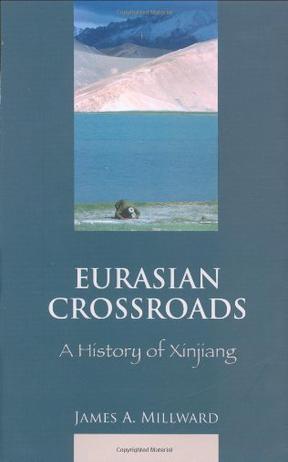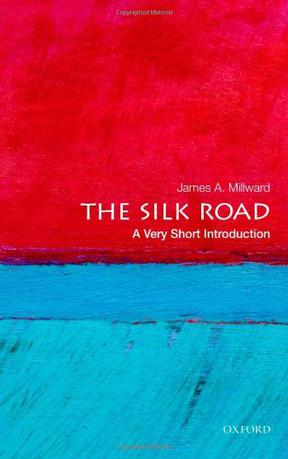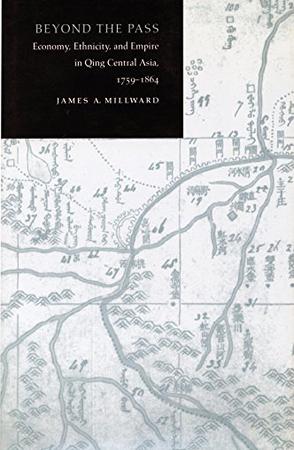欢迎来到相识电子书!
标签:米华健
-
Eurasian Crossroads
Eurasian Crossroads is the first comprehensive history of Xinjiang, the vast central Eurasian region bordering India, Pakistan, Afghanistan, Tajikistan, Kyrgyzstan, Kazakhstan, Russia, and Mongolia. Forming one-sixth of the People's Republic of China (PRC), Xinjiang stands at the crossroads between China, India, the Mediterranean, and Russia and has, since the Bronze Age, played a pivotal role in the social, cultural, and political development of Asia and the world. Xinjiang was once the hub of the Silk Road and the conduit through which Buddhism, Christianity, and Islam entered China. It was also the point at which the Chinese, Turkic, Tibetan, and Mongolian empires communicated and struggled with one another. Xinjiang's population comprises Kazakhs, Kirghiz, and Uighurs, all Turkic Muslim peoples, as well as Han Chinese, and competing Chinese and Turkic nationalist visions continue to threaten the region's political and economic stability. Besides separatist concerns, Xinjiang's energy resources, strategic position, and rapid development have gained it international attention in recent decades. Drawing on primary sources in several Asian and European languages, James Millward presents a thorough study of Xinjiang's history and people from antiquity to the present and takes a balanced look at the position of Turkic Muslims within the PRC today. While offering fresh material and perspectives for specialists, this engaging survey of Xinjiang's rich environmental, cultural, and ethno-political heritage is also written for travelers, students, and anyone eager to learn about this vital connector between East and West. -
The Silk Road
Highlights biological, technological, and cultural as well as economic exchanges on the silk road Explains the dynamics of silk road communication as a function of the rise of Central Eurasian nomad empires and their interaction with sedentary agrarian states Disputes the common assertion of a "silk road decline" from around 1500 The phrase "silk road" evokes vivid images: of merchants leading camel caravans over deserts and steppes to trade exotic goods in the bazaars of glittering Oriental cities, of pilgrims braving bandits and frozen mountain passes to gather scriptures and spread their faith across continental expanses. Beyond the exotica, however, this VSI will be a sketch of the historical background against which the silk road flourished, and an essay on the significance of old-world intercultural exchange to Eurasian and world history generally. On the one hand, Millward treats the silk road broadly, as a metonym for the cross-fertilizing communication between peoples across the Eurasian continent since at least the Neolithic era. On the other, he highlights specific examples of goods and ideas exchanged between the Mediterranean, Persian, Indian, and Chinese regions, along with the significance of these exchanges. While including silks, spices, travelers' tales of colorful locales, the main focus of the book is to outline the dynamics of Central Eurasian history that promoted silk road interactions, especially the role of nomad empires; and to highlight the importance of the biological, technological, artistic, intellectual, and religious interchanges across the continent. Millward shows that these exchanges had a profound effect on the old world that was akin to, if not yet on the scale of, modern globalization. Millward also considers some of the more abstract contemporary uses to which the silk road concept has been put. It is, of course, a popular marketing device for boutiques, museums, restaurants, and tour operators from Venice to Kyoto. More than that, however, the silk road has ideological connotations, used sometimes to soften the face of Chinese expansion in Central Asia, or, in the US culture wars, as a challenge to the "clash of civilizations" understanding of intersocietal relations. Finally, while it has often been argued that the silk road declined or closed after the collapse of the Mongol empire or the opening of direct maritime communications from Europe to Asia, Millard disputes this view, showing how silk road phenomena continued through the early modern and modern expansion of Russian and Chinese states across Central Asia. Readership: Trade readers interested in the Silk Road, introductory courses in Asian history and world history, high school world history courses, museum-goers at Silk Road exhibits -
Beyond the Pass
James A. Millward's study of the Qing dynasty's governance of Xinjiang is possibly the most careful study of the subject written since Owen Lattimore's studies of Central Asia. Taking on the Fairbankian idea of concentric rings of Chinese empire, Millward reminds us that the ways in which the Qing dynasty governed its far western regions was a Manchu policy, with distinct characteristics. The treatment is topical, but does not lose sight of the chronological narrative. The study ends, however, before the Muslim rebellions in the region changed it forever, both in its ethnicity and demographics.
热门标签
下载排行榜
- 1 梦的解析:最佳译本
- 2 李鸿章全传
- 3 淡定的智慧
- 4 心理操控术
- 5 哈佛口才课
- 6 俗世奇人
- 7 日瓦戈医生
- 8 笑死你的逻辑学
- 9 历史老师没教过的历史
- 10 1分钟和陌生人成为朋友



